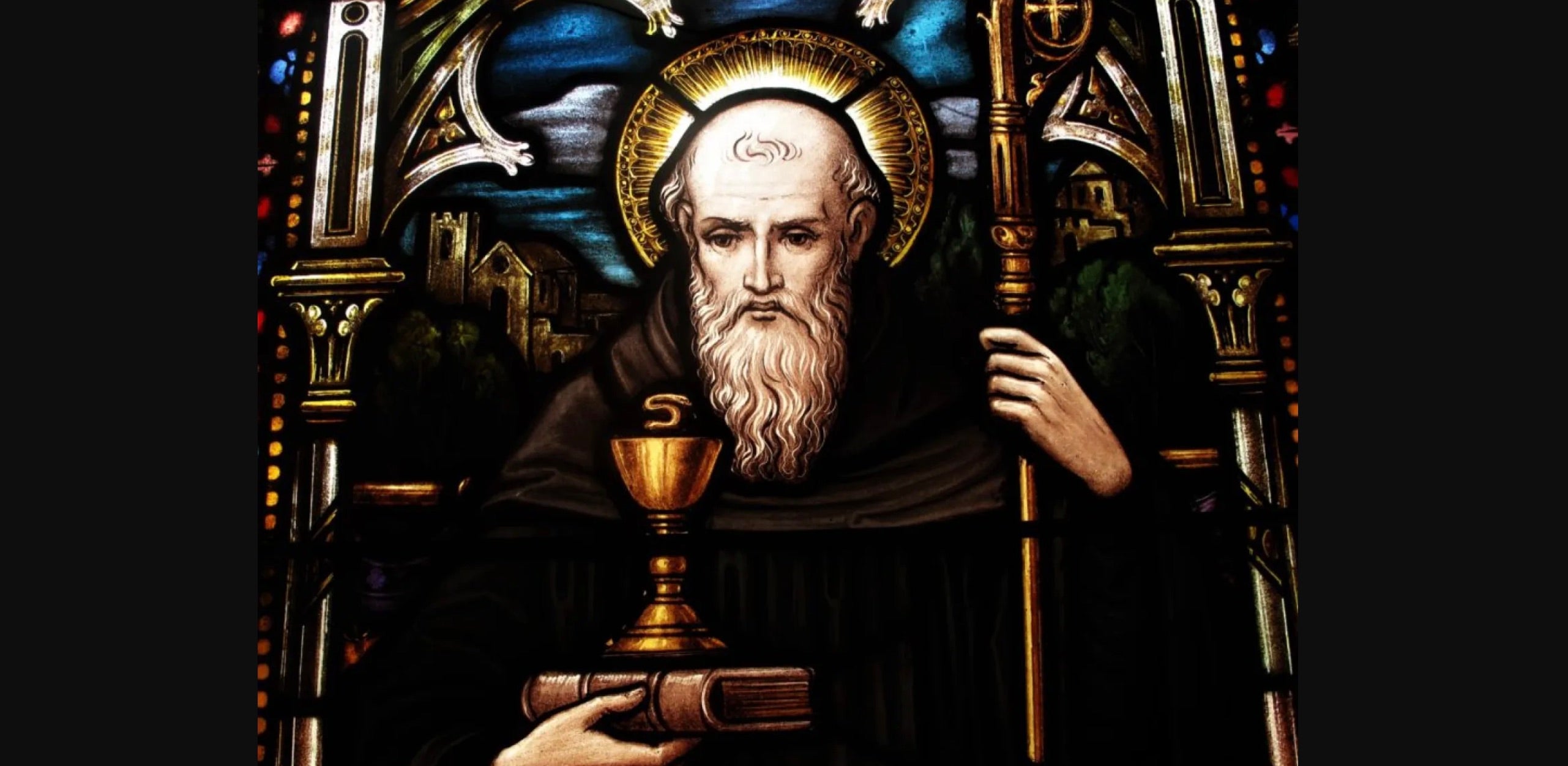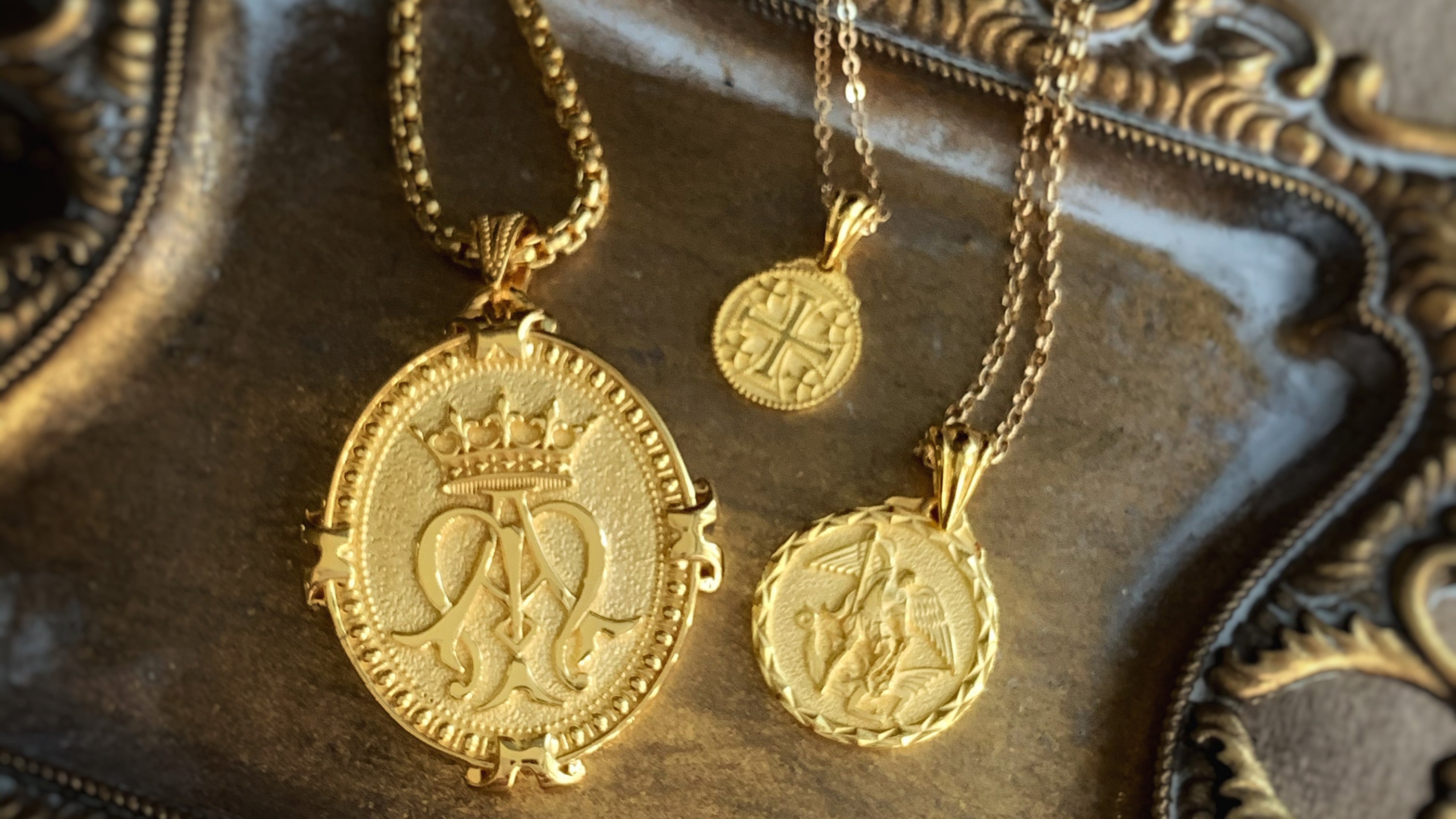
St. Benedict and His Medal
St. Benedict was a Christian saint who lived in the 5th century and is known as the founder of Western monasticism. He established the Benedictine Order, which emphasized a life of prayer, work, and community. He was also known for his devotion to the spiritual battles against evil. St. Benedict's teachings and rule became the foundation for monastic life in the Western Christian tradition.
Like any other religious medals, the St. Benedict medal is a sacramental. “Sacramentals are sacred signs which, in a sense, imitate the sacraments. They signify certain effects, especially spiritual ones, and they achieve these effects through the intercession of the Church.” CCC 1166
The St. Benedict Medal is often worn or carried by believers as a symbol of devotion and protection. The medal features a cross on one side, with the initials C.S.S.M.L., which stand for "Crux Sacra Sit Mihi Lux" (May the Holy Cross be my light), and the letters N.D.S.M.D., which stand for "Non Draco Sit Mihi Dux" (Let not the dragon be my guide). The cross is surrounded by several other inscriptions and symbols representing various prayers and invocations for protection against evil.
On the other side of the medal, there is an image of St. Benedict himself, holding a cross in one hand and a book in the other. Around his image, there are more inscriptions and symbols, including the words "Pax" (Peace) and "Benedictus" (Blessed). The entire design of the medal is intended to invoke the intercession and protection of St. Benedict and to serve as a reminder of the spiritual values and teachings associated with his life.
Click this link to Shop St. Benedict Medal!
Why Wear a St. Benedict Medal? When worn or carried with devotion, a blessed St. Benedict medal is believed to have the power to protect the wearer from harm, both physical and spiritual. It is also believed to have the power to ward off evil, especially witchcraft and, to bring about spiritual healing and, to protect the faithful from poison. St. Benedict is also considered to be the patron of a "happy death."
This is rooted in a story about Benedict’s holiness and his special powers to discern good and evil. When Benedict had been living for several years as a hermit, some men who were living together as a religious community came to him for direction, since their abbot had recently died. They asked Benedict to take over their community. Some of the monks, though, didn’t like the plan of bringing in an outsider, and attempted to kill Benedict with poisoned bread and wine. However, when St. Benedict made the sign of the Cross over these things as he said grace, he discerned they were poisoned, so he toppled the cup and commanded a raven to carry off the bread. That is why the front of the medal depicts a cup with a snake and a raven carrying off a loaf of bread.
- The image of St. Benedict holding a cross and a book, which represents his devotion to God and his teachings.
- The letters C.S.P.B., which stand for “Crux Sancti Patris Benedicti” (The Cross of the Holy Father Benedict) to symbolize the power of the cross and the importance of St. Benedict’s teachings.
- The letters V.R.S.N.S.M.V., which stand for “Vade retro satana! Nunquam suade mihi vana!” (Begone, Satan! Never tempt me with your vanities!). This is a prayer to St. Benedict for protection from evil.
- The letters S.M.Q.L.I.V.B., which stand for “Sunt mala quae libas, ipse venena bibas” (The cup you offer is evil, drink the poison yourself). This is a reminder of the power of faith and the importance of resisting temptation.
There are many stories of the power of the St. Benedict medal such as people who have been protected from harm during times of war or other dangerous situations. There are also stories of people who have been healed from physical or spiritual illnesses after wearing the medal and praying for St. Benedict’s intercession.
Be sure to have your medal blessed and may it be a strong reminder of your faith and stance against evil.


